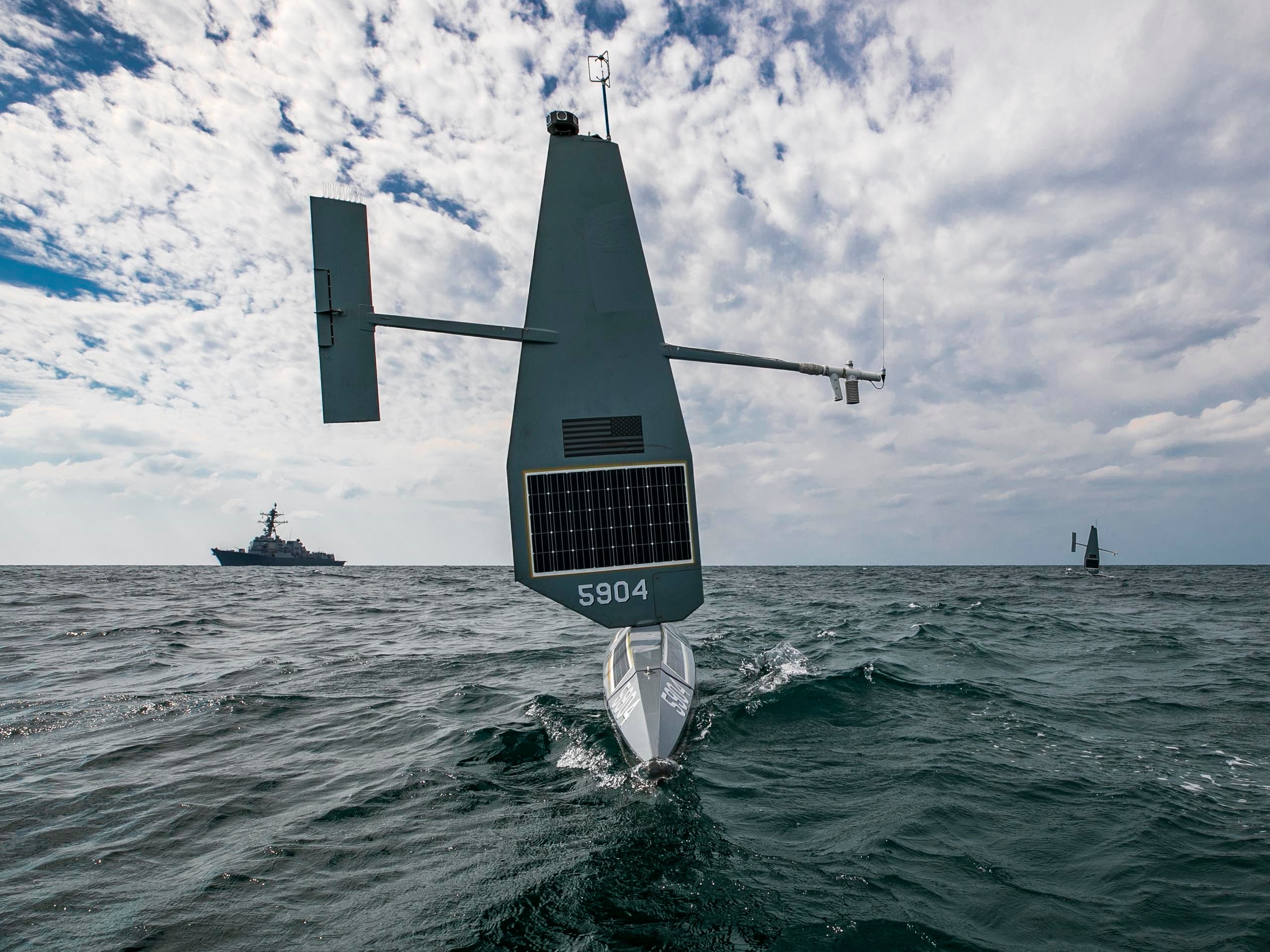
The U.S. Navy will expand its unmanned systems experimentation testbed to U.S. 4th Fleet to counter both drug trafficking and China’s illegal fishing, service officials announced Tuesday.
The service plans to export its unmanned platforms and artificial intelligence testing in U.S. 5th Fleet under the Task Force 59 template to U.S. Southern Command as part of the interagency effort against transnational criminal organizations and illegal fishing. While the plans for exactly how many and what type of systems are still in flux, the Navy will kick off the experimentation in July with the annual UNITAS exercise.
Operating the systems in 4th Fleet will help the military “address several significant challenges,” Secretary of the Navy Carlos Del Toro said at the Navy’ss Leagues Sea Air Space symposium.
“These include narcotics and human trafficking, as well as economic and ecological harm caused by illegal, unreported and unregulated fishing, which the People’s Republic of China – with their distant water fishing fleets – participates in both the Pacific coasts and the Atlantic coasts of Central and South America,” Del Toro said.
“The sustained presence of these unmanned platforms provides us with the endurance and reach necessary to compliment the activities of our manned platforms, freeing then up for other missions.”
While the unmanned experimentation will help the Navy pursue the hybrid fleet of the future and take lessons for future operations in other regions, Del Toro said it will also help the U.S. work with allies in SOUTHCOM as it integrates other nations into the experimentation, as the Navy has done in 5th Fleet.
“Bringing these platforms and technologies to 4th Fleet sends a strong signal to our Caribbean, our Latin and South American partners that we are committed to their national and economic security and that we are investing resources and to addressing the challenges we all face in the region together,” he said.
How far south the experimentation will go is still under consideration, Chief of Naval Operations Adm. Mike Gilday said on stage alongside Del Toro at the same conference.
“We think that unmanned takes it to another level, in terms of that [area of responsibility], and our being able to keep more of an unblinking eye on that traffic up coming north,” Gilday said. “Also with respect to illegal and unregulated fishing … there’s no better way to compete with the PRC in grey zone activities than to expose them.”
Since it kicked off the Task Force 59 experimentation in 5th Fleet nearly two years ago Navy officials have touted the work as a success that has allowed the service to quickly use new technology in daily operations. Gilday said Task Force 59 has successfully overcome the so-called “valley of death” scenario that typically plagues new technology in the acquisition process.
The experimentation in the Middle East has focused mostly on smaller, commercial unmanned platforms that are contractor-operated, but the Navy owns the data.
In 4th Fleet, the Navy will not stand up a separate task force, but instead will incorporate the testbed into the numbered fleet’s command and staff, Gilday told reporters Tuesday.
“So intelligence, operations, plans, manpower – so it’ll all be integrated in. So we wanted to take a different approach rather than a task force this time because … we’re integrating additional sensors into the battle space and we think this is another way to normalize it,” he said.
The current plans for 4th Fleet are focused on unmanned air and surface platforms, but undersea platforms could come next.
“We have six different unmanned platforms, undersea platforms. So some of those are torpedo-launched. There were three that do mine counter-measures. There are two more that do seabed exploration. And so there’s another one that has a [anti-submarine warfare] capability. And as I mentioned, some of those are sub-launched capabilities,” Gilday said.
“The other thing that we’ve been talking about with the Secretary is we do have some experimenting with motherships as well. And so there’s a lot to learn here. We have a lot of opportunities here in terms of unmanned. we’re not trying to self-limit,” the CNO added.
U.S. Southern Command has for years operated as a technological test bed for the Navy, particularly when it comes to unmanned aviation assets like the MQ-8 Fire Scout and the RQ-4 Global Hawk.





